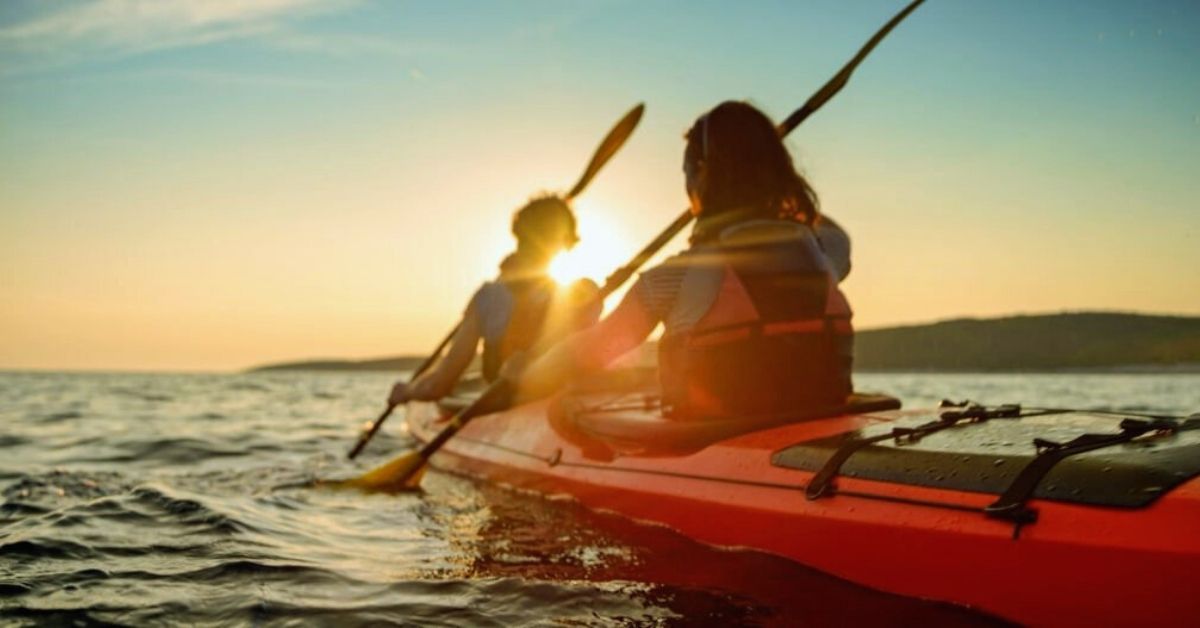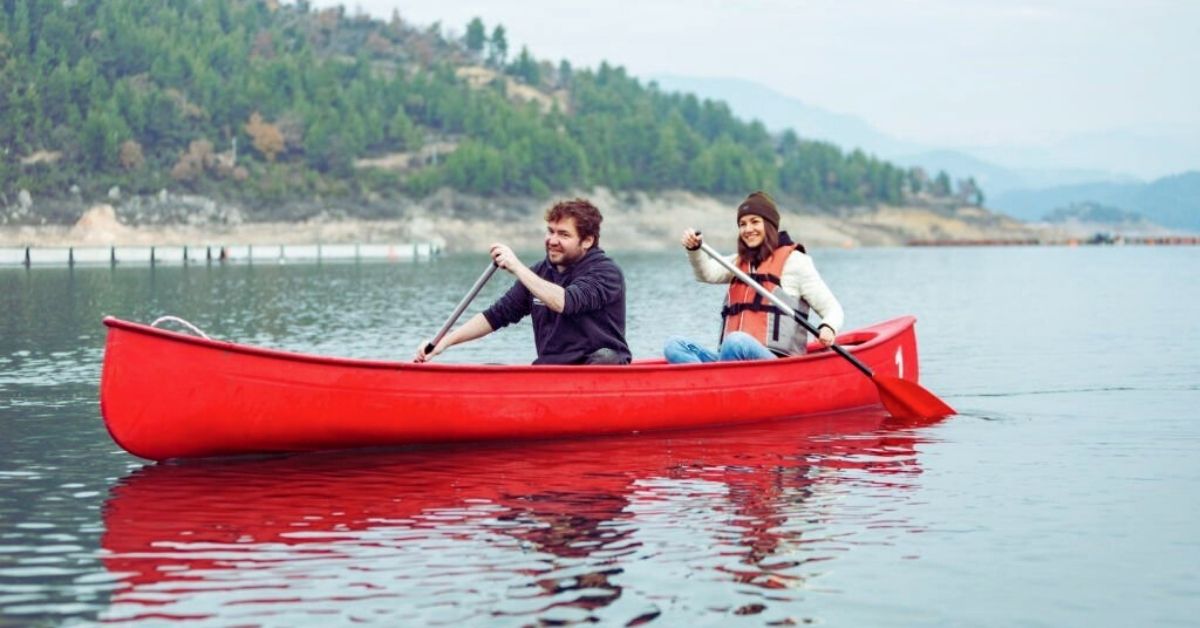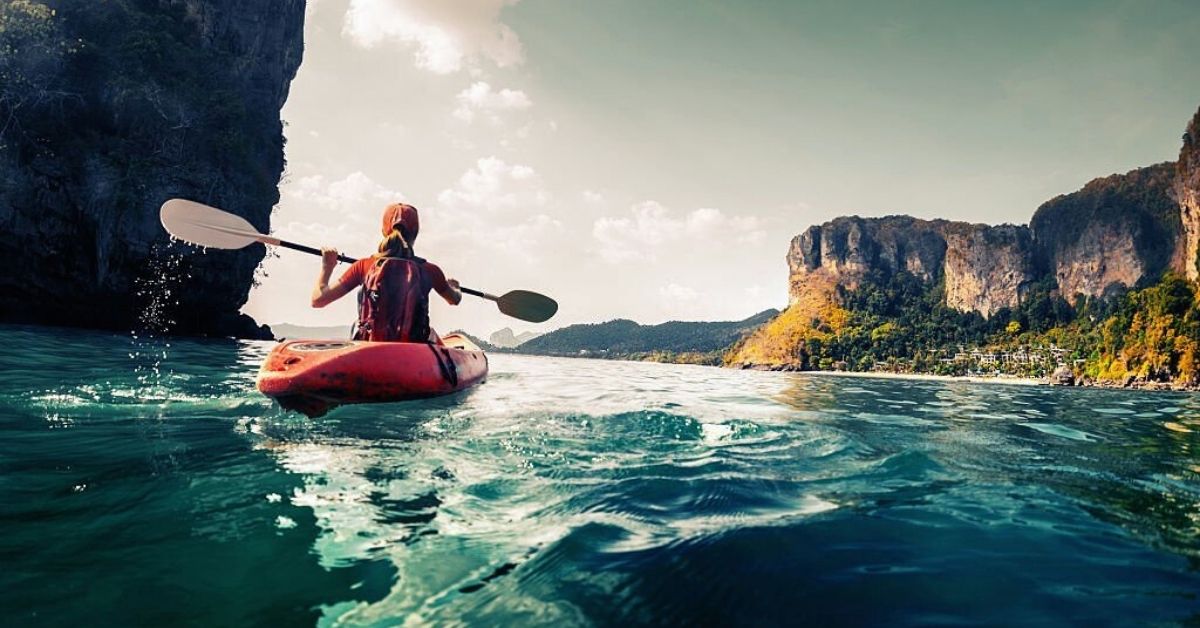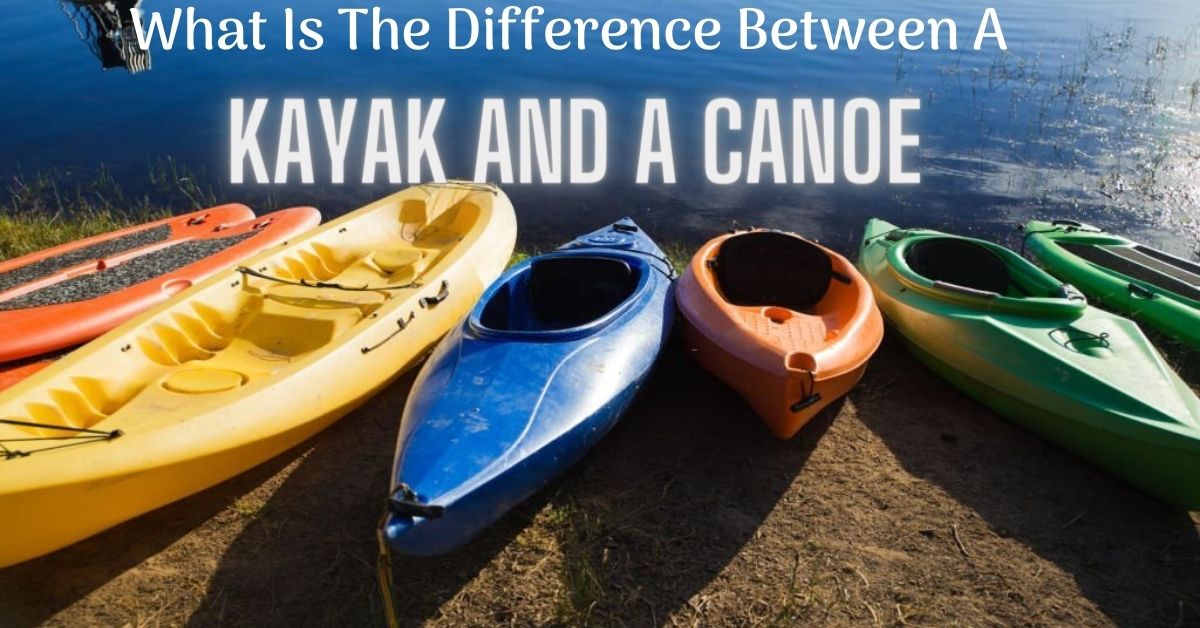Kayaking and canoeing are popular outdoor sports that let you see nature. The difference between a kayak and a canoe? Just various names for the same thing?
Actually, they vary greatly. How they’re utilized and their capabilities matter more than their forms or sizes. Know the differences between kayaks and canoes to select the ideal one for your next expedition.
Table of Contents
1. Introduction to kayaks and canoes
We’ll compare kayaks and canoes’ designs, features, and usage in this article. Read on to learn about these two popular boats and choose one that’s ideal for you, whether you’re a novice or an expert paddler.
Canoes
Kayaks and canoes are popular water sports and leisure activities that are sometimes mistaken. Both are meant to traverse water, yet they have different functions. This article will explain the distinctions between kayaks and canoes to help you pick the proper watercraft for your next excursion.
A double-bladed paddle propels a kayak, a narrow, sleek boat. It’s usually for one person, however tandem kayaks are available.
The paddler sits with their legs out in front of them in a closed kayak cockpit. This design fits snugly and improves water movement. Whitewater rafting, sea kayaking, fishing, and touring all great with kayaks.

Canoes, built of wood or aluminum, are broader and more roomy. Canoes are paddled with a single-bladed paddler kneeling or sitting on a raised seat. Canoes are open, making access and exit easier than kayaks. Canoes are stable and popular for paddling, exploring calm lakes and rivers, and camping.
Kayaks
Both kayaks and canoes are fun ways to paddle, but knowing the differences might help you choose depending on your tastes and usage. To assist you in selecting a watercraft, we will delve into three key areas: design, paddling skills, and activity appropriateness.
Whether you’re seeking an adrenaline-pumping adventure on rapid waters or a tranquil day of paddling, gaining a deeper understanding of kayaks and canoes can enhance your water-bound experiences.
2. Understanding kayak construction and design
To distinguish between kayaks and canoes, it’s important to understand their design and construction. Kayaks are sleek, agile vessels designed for solo or small group paddling. Their streamlined shape allows them to glide swiftly through rivers, lakes, and even ocean waves.
Cockpit
The enclosed cockpit of a kayak is important. The paddler is protected from the elements by a spray skirt above this sitting area. The cockpit design shields the paddler from splashes, stabilizes the kayak, and gives the paddler more control.
Kayak paddlers sit lower and extend their legs forward in the cockpit. This seating position with a foot-operated rudder or skeg improve kayak control and steering. The paddler also utilizes a double-bladed paddle to move the kayak.
Materials
Kayaks are built of fiberglass, plastic, or carbon fiber. These lightweight, durable materials can endure turbulent waves and collisions.
There are various kayaks for different uses. Sea kayaks are longer and slimmer for long-distance cruising and ocean exploration. However, whitewater kayaks are stronger to endure fast-flowing rivers and rapids.
You can appreciate kayaks’ distinctive characteristics and capabilities compared to canoes by studying their design and construction. Whether you’re an experienced paddler or just interested, knowing the differences between kayaks and canoes helps you pick the ideal vehicle for your water excursions.
3. Exploring boat design and structure
There is much to learn about canoe design and construction. For millennia, societies have utilized canoes, which have developed to fit varied needs and situations.
Design
The form of a canoe is important. The long, thin hull of canoes let them glide smoothly across the water. This sleek shape reduces drag and boosts performance. The bow and stern of the canoe help cut through the water with little resistance.
The open hull of a canoe may carry numerous people or goods. Fishing and camping are suited for its open design’s simple access and egress. Longer canoe trips may be made more comfortable with seats or benches.
Canoe structure
Construction material is very significant in boat design. Birch bark or dugout logs were used to make traditional boats. Modern canoes are made of aluminum, fiberglass, or tough polymers. Durability, lightness, and water resistance are improved by these materials.
Canoes include design aspects that improve stability and maneuverability. Many canoes have flat bottoms for stability on calm seas. Keels or skegs, flat or curved features that protrude from the hull, help canoes track and stabilize in choppy waves.
Finally, canoes normally use paddles to propel themselves. Long paddles with blades and grips or handles are usual.
Understanding the design and structure of canoes allows fans to appreciate their artistry. Canoes are a popular choice for water transportation, providing an enjoyable and adventurous experience to those who seek it.
4. Key differences in functionality and purpose
Water activities like kayaking and canoeing are popular. They may seem similar, yet they have different functions and purposes.
These boats vary in design and construction. Slim, narrow kayaks float low in the water. Built for speed, agility, and maneuverability. The enclosed cockpit of a kayak provides security and weather protection. Canoes feature higher sides, an open design, and more storage. Wider and more sturdy, they can carry more goods or people.

Another difference is how each vessel paddles. A double-bladed paddle helps kayakers go quickly. The paddler uses their legs and body to power a low seat.
However, canoeing uses a single-bladed paddle. Kneeling or sitting on an elevated seat, the paddler uses arm and upper body power to steer the canoe.
Due to their agility and speed, kayaks are popular for whitewater rafting, sea kayaking, and racing. They can easily negotiate small, twisting rivers or turbulent seas. However, canoes are great for fishing, camping, and paddling. Their roomy form provides comfortable seats and gear and supply storage.
Understanding these distinctions in functionality and purpose between kayaks and canoes is essential for picking the proper watercraft for your activity. Selecting the right watercraft will improve your water experience, whether you want an adrenaline rush or a peaceful paddle.
5. Which one is right for you: Factors to consider
There are various aspects to consider while selecting between a kayak and a canoe. Each of these watercrafts has its own features and uses, so know your demands before buying.
Consider the intended usage first. Do you like to paddle tranquil lakes and sluggish rivers or more daring whitewater? For family picnics and fishing adventures, canoes are perfect for hauling heavier goods and many people. However, kayaks are popular for recreational paddling and rapids because to their agility and speed.
Consider your comfort level. With a lower seat and greater control, kayaks are more ergonomic. However, canoes provide greater room and stability, making longer trips more relaxing.
Take storage and transportation into account. Kayaks are lighter and smaller, making them simpler to carry and store. You may carry them or put them into vehicle racks. Canoes are bulkier and may need a trailer and extra storage space.
Additionally, consider your expertise and experience. Kayaks, particularly sit-in variants, need experience to balance and navigate. With their open form and adaptability, canoes are simpler for beginners to manage.
Pros and Cons of kayak
It’s no wonder that kayaks are gaining popularity among outdoor enthusiasts. These sleek and agile watercraft provide a delightful paddling experience. However, before purchasing a kayak, it’s important to consider both the benefits and potential drawbacks.
Kayaks offer excellent maneuverability as one of their primary advantages. These boats are designed to be user-friendly, allowing paddlers to navigate through small streams, remote areas, and even challenging whitewater rapids. Kayaks have a lower center of gravity, which enhances stability and reduces the risk of tipping over.
The adaptability of kayaks is another plus. Whatever your skill level and activity, there’s a kayak for you. There is a kayak for every use, from recreational to touring to fishing or surfing.

Kayaks provide a more personal connection to nature and water. Paddlers feel more connected to their environment with its sit-in design, and the enclosed cockpit protects them from wind, water splashes, and cold. This makes kayaking ideal for exploring varied ecosystems and animal habitats.
As with every boat, kayaks have downsides. Storage space is limited. Kayaks have fewer storage compartments than canoes, making it harder to carry heavy supplies on long voyages. For persons with limited mobility or flexibility, kayaks are harder to access and depart.
Another possibility is kayak seats. Paddlers may find the close fit and lower sitting position unpleasant, especially on prolonged trips. For comfort and fatigue prevention, pick a kayak with a good seat and backrest.
Canoe Pros and Cons
For its flexibility and ageless charm, canoes have been loved. Canoes provide a unique and immersive outdoor experience, whether you’re on a tranquil lake or twisting rivers. Canoes, like any watercraft, have benefits and downsides that should be considered before choosing one for your next excursion.
One of canoes’ benefits is their storage capacity. Canoes are perfect for long journeys or activities that involve hauling large baggage due to their open shape and big cabin. This makes them popular with fishermen, outdoor enthusiasts, and families on multi-day expeditions.
Canoes are also known for their steadiness on calm seas. Their stable, broad, flat-bottomed hull allows for simple handling and comfortable sitting. Canoes are ideal for individuals who want to feel safe when paddling on calm lakes or rivers.
For high-speed thrills or turbulent waves, canoes may not be the best solution. The shape of canoes makes them more wind-prone and slower than kayaks. This makes it difficult to handle strong currents or travel vast distances quickly.
Canoe seating is another consideration. They have enough of gear capacity, but the seating is less ergonomic than kayaks. Canoe paddlers sit on benches or seats above the water, which may not give as much comfort and back support as kayak seats.
The experience you want determines your boat choice. If you value storage, stability, and a slower pace, a canoe may be ideal for outdoor adventures. However, a kayak may be preferable for speed, agility, and a closer relationship with the water.
6. Kayak kinds and variants
There are several varieties of kayaks for different uses and situations. Understanding the distinctions between these kayak kinds will help you pick one.
1. Recreational kayaks are ideal for beginners and casual paddlers. They are steady, simple to handle, and great for lakes and slow-moving rivers. Popular recreational kayaks feature big cockpits for easy entrance and egress.
2. If you want to spend lengthy hours on the water, tour kayaks are best. These kayaks have more camping gear storage and are suited for long expeditions. They track better in open water than recreational kayaks because to their length and narrowness.
3. Whitewater kayaks are designed for fast-moving rivers and rapids. They are shorter, more agile, and designed for whitewater turbulence and obstructions. Whitewater kayaks feature spray skirts to keep water out of the cockpit.
4. Sea kayaks are for ocean and big lake kayaking. Longer, slimmer, and streamlined, they boost speed and efficiency. Sea kayaks include hatches and bulkheads for storage and capsize buoyancy.
5. Fishing kayaks include rod holders, storage, and solid casting platforms. To carry fishing gear, these kayaks are broader and more stable.
When picking a kayak, consider your usage, skill level, and water type. Each variety has advantages that may improve your kayaking experience.
7. Canoe types and variants
There are many sorts and varieties of canoes to meet various purposes and interests. Understand these distinctions to improve your understanding and make an educated canoe choice.
• Traditional boat: The traditional boat design. Its open-top hull has high sides and pointed front and rear. Traditional canoes are great for fishing, leisurely paddling, and short journeys.
• Recreational canoes are popular with novices and casual paddlers due to their stability and simplicity of usage. They are more stable on calm conditions because to their broader, flatter hulls. These boats are suitable for lake and slow-moving river day outings.
• Whitewater canoes are for adrenaline-seeking paddlers. These boats are designed for rapids and swift rivers. A more rounded and agile hull allows for rapid turns and accurate control.
• Touring canoes are suited for multi-day adventures. These canoes glide over the water with their sleek, streamlined hulls for efficiency and stability. They contain plenty of kit storage, making them ideal for camping.
• single boats are for single paddlers who prefer to enjoy the water alone. Most are smaller and lighter, making them simpler to move. Solo canoes exist in leisure, whitewater, and touring versions for different paddling techniques.
• Canadian Canoe: The “Prospector” or “Tripping” canoe is flexible for pleasure and adventure paddling. Its symmetrical hull makes it nimble in diverse water conditions. Canoes from Canada are stable, durable, and can carry heavy loads.
• One or more outriggers support these boats, which are utilized in coastal areas and for water activities like outrigger canoe racing. Paddlers can handle harsh seas and waves with the outriggers’ stability and balance.
Choosing the proper boat requires knowledge of its kinds and variants. There’s a canoe for every need, whether you want excitement, pleasure, or a hard excursion. Explore the world of canoes and their many alternatives.
8. Final Words
It comes down to your requirements and tastes when picking a kayak or canoe. Both boats have benefits and suit various watersports.
The stability and adaptability of a canoe or the speed and agility of a kayak both provide excellent water adventures. Choose one that meets your demands and have wonderful outdoor activities.
